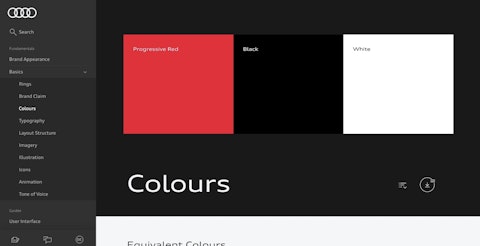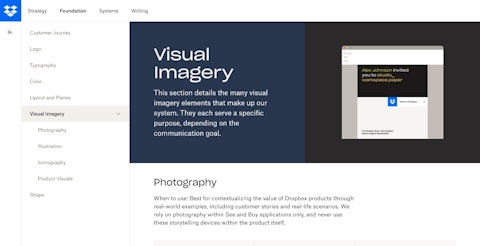Brand guidelines are essential for any brand or business. Not only do they help ensure consistency, but they also provide a blueprint for how the brand should look, sound and feel.
The goal of brand guidelines is to create a unified brand identity that resonates with customers and helps achieve desired brand objectives.
They are important for anyone looking to create a unified brand identity and ensure a consistent experience across all channels. Whether you’re an individual freelancer or a large corporate business, brand guidelines can help create brand recognition, loyalty and trust amongst your customers.
So, let's take a deeper dive into what brand guidelines are, how they can benefit you and some tips for creating your own.

Looking for a branding agency?
Get in touch to chat about your branding & identity requirements.
What are brand guidelines?
At their core, brand guidelines, also known as a brand book or style guide, provide a set of rules and standards that help to define your brand's personality, aesthetic, messaging and tone of voice.
They generally include elements of the brands' visual identity such as company logo usage, colour palette and typography and visual brand elements like icons or graphics, photography and illustration standards along with messaging style and tone of voice.
By creating a brand guideline, businesses can ensure that designers, writers, and anyone else using their brand's elements are on the same page when can create consistent marketing material across all channels – from websites and social media to print materials and products.
They can help you know what to include in brand content and what should be excluded and help create a brand image that is true to the brand's core values, mission and overall brand message.

Brand identity vs brand guidelines vs design system, what's the difference?
Brand identity is the combination of various core elements such as logos, colours and imagery that work together to communicate a brand’s core message and values.
Whereas brand guidelines are like an instruction manual, providing specific information about the brand voice and elements that should be used. In other words, brand identity is what makes up a brand while brand guidelines provide the rules on how to use it.
A design system is a comprehensive library of digital elements, styles, components, rules and patterns designed to be reused time and time again, by multiple teams to efficiently create cohesive brand experiences online.
Both brand guidelines and design systems are necessary for maintaining consistency across all platforms and help facilitate design at speed by removing guesswork and being a single source of truth.

Why are brand guidelines important?
Having brand guidelines in place is incredibly important for any brand. Without them, brand consistency can become a struggle, messaging can become inconsistent and brand recognition can suffer.
A brand guideline helps ensure that all your design elements – from logos and colour palettes to messaging and tone of voice – are used correctly and consistently across all your brand touchpoints.
Consistency is key, and brand guidelines are the key to consistency (see what I did there?). Whether you’re an individual freelancer or a large corporate business, consistent brand presentation helps build brand trust and loyalty and increases customer interaction which is essential for your brand's success.
When brand books are not followed, consistency can easily be compromised. This can lead to confusion and misperception of the brand’s brand messaging and brand identity. Design elements may be used incorrectly, brand messaging can become muddled and brand recognition can deteriorate. This can lead to brand dilution over time and brand confusion among customers.
To ensure brand consistency, a brand book should be followed closely and reviewed regularly.
When should you create a brand guideline?
Creating brand guidelines should be an integral part of any branding project process. This includes when developing a new brand or undergoing a rebrand – as it helps to ensure all brand elements are used correctly and consistently across all channels right from the start.
Usually, the brand guideline document is created right at the end of the process, pulling together everything into a comprehensive single source of truth.
How much do brand guidelines cost?
The cost of brand guidelines will depend on the complexity and scope of your brand. However, most range from a few hundred to several thousand pounds.
This cost can be impacted by the size of your organisation, its structure, the number of elements you have and the depth of guidelines that need to be created. Additionally, most brands are constantly evolving and so brand guidelines need to be updated regularly, so the cost of brand maintenance should also be taken into account.
To keep brand messaging consistent, the brand book should be followed closely and reviewed regularly. This way, you can ensure that the people responsible for communicating your brand always know how to use it as your brand evolves.
How to create effective brand guidelines
Creating strong brand guidelines can seem daunting to any brand, but there are a few simple tips that will help you get started.

1. Consider what elements you need to include in your brand guidelines
The specifics of what brand guidelines include will vary from brand to brand, but some key elements to consider are:
Brand values and story
It's essential for anyone using your brand to understand what your brand stands for. Your brand story is a narrative that explains why your brand exists, as well as its core values, mission and messaging.
Your brand story should be crafted to resonate with your brand's target audience and should be included as part of comprehensive brand guidelines.
Logo usage
The company logo is usually the first visual element associated with a brand and it’s important that it remains consistent across all channels.
Your logo usage guidelines should feature details about all different versions of your logo, including primary and secondary logos and how they should appear on both light and dark backgrounds. It should outline their exclusion zone, which is the white space around the logo, and the minimum sizes.
The logo guidance should provide information about where your logo variations can and cannot be used and how it should look when printed or online.
Colour Palette
Brand colours help create brand recognition as they are the visual representation of your company, often designed to depict a particular emotion or to be associated with a certain product or service within your brand portfolio.
Your brand colour guidelines should detail what brand colours are used, what their technical colour values are and outline where and how they should be used.
Typography guidelines
Your brand guidelines should include information on the brand's typography, such as what typefaces are used, what sizes and weights for titles and body text, and how it should be used online or in print.
Remember to include any universal, web-safe font alternatives for internal use where a fancy paid-for font can't be used.
Brand voice and tone guidelines
Your brand's voice and tone are equally as important for brand recognition as the visual elements. Verbal identity guidelines are used to create brand-consistent messaging.
Your verbal identity guidelines should include brand mission, brand values and core messaging. Your brand tone of voice guidelines should provide information about how to use language, what type of language to avoid and how to create brand-consistent content.
Imagery, graphics and photography
Your brand guidelines should include a mood board of what images to use, when to use them, and what brand message each image should portray.
If you have an Illustration style unique to your identity, icons or graphics then these should be included too.

2. Make sure to keep brand guidelines concise and easy to understand
When creating brand guidelines, it is important to make sure that they are concise and easy to understand.
Your brand guidelines should be written in a way that is easily understandable by all company stakeholders, from brand managers to graphic designers.
Make sure that the brand guidelines are written in clear and simple language, avoid brand jargon and provide examples where necessary to help illustrate.
Ensure your brand guidelines are organised in a way that is easy to navigate and access, so stakeholders can quickly find what they need to get their job done.

3. Review brand guidelines regularly to ensure consistency is maintained
Brand guidelines need to be reviewed regularly as a business grows.
For example, brand colours or typography may need to be updated based on changes in brand messaging or brand positioning. It is also important to review brand guidelines regularly to ensure that the brand essence is being correctly implemented and used consistently across different mediums.
Giving your brand guidelines and regular service will make sure they're always in line with where your business is heading.

What format should my brand guidelines be in?
Once you have created brand guidelines, it is important to decide what format they should be in. A brand guidelines document in a PDF format is generally the most universal, they can be printed out for reference or viewed digitally so that all stakeholders can access them online.
Some choose to present their company's branding guidelines as an interactive website, which contains all brand resources such as logo variations, colours and fonts, you see a great example of this a little later on.

Do's and don'ts for brand guidelines
✅ Use simple and concise language
Concise language also helps to make brand guidelines more accessible and easy to navigate, ensuring that all brand resources are quickly available at a glance.
✅ Include the basics
Logos, colours and fonts are the building blocks of brand identity, it is essential for brand guidelines to feature these elements as they form the foundation of your brand’s visual identity.
Logos should always be included in brand guidelines to create a unified brand look across platforms and materials, with colours being used to help differentiate different aspects of brand identity and fonts to help create brand consistency across different mediums. While imagery helps to bring brand messaging to life.
✅ Share the background
It’s essential for anyone using brand guidelines to understand your values and brand story. This understanding helps ensure that brand messaging is consistent throughout, whilst brand story can be used as a tool for creating engaging content that resonates with target audiences.
Be sure to include brand values and brand story in brand guidelines so stakeholders have a clear understanding of what your brand stands for and its overall mission.
❌ Don't use brand jargon or confusing terminology
It's important your guidelines are accessible for stakeholders of all skill-sets and knowledge levels, so use simple language when writing brand guidelines as complex brand jargon can be difficult for people to understand and could lead to confusion on how your brand should be used.
❌ Don't forget to review regularly
As a company evolves, the style guide may need to be updated based on changes in brand positioning. Regular reviews will also help you maintain brand essence, keeping your brand look and feel on point at all times.
❌ Don't neglect to outline how elements should be used across different mediums
It’s important to specify how brand elements should be used across different mediums and platforms. For example, logos may need to be sized differently for use on digital channels, social media or printed materials.
Outlining the correct usage of these elements across all platforms will ensure that your brand identity is always on point, wherever it's viewed👌.
Looking for a brand guidelines agency?
Get in touch to chat about the requirements for your project.
10 brand guideline examples from companies that nailed it
Here are a few examples of brand guidelines from some of the world's best brands to wet your whistle.

1. Slack
A clean, clear and concise example of a more simplistic brand book.

2. Barbican
We love how interactive this online style guide is, keeping stakeholder engaged all the way through.

3. Starbucks
A totes gorge brand website, informative and beautiful.

4. Audi
Another lovely online guideline going into great detail about the iconic brand's story and values.

5. Netflix
Logo usage from the streaming titans.

6. TikTok
An epic example of a brand book, just as addictive as the platform.

7. YouTube
All the kills, no thrills.

8. Dropbox
A great microsite, easy to understand and navigate.

9. Spotify
A single-page microsite with all the essentials.

10. Zendesk
This microsite has a beautiful user experience, leading with what the user wants to achieve with their existing brand elements or request an addition, love it.
Looking for a branding & identity agency?
Get in touch to chat about the requirements for your project.
In conclusion
It is essential for any brand to have clear rules and guidelines that outline how it should be used and developed. A brand style guide provides a unified look and feel, allowing stakeholders to create consistent messaging across different platforms and materials.
By understanding what should be included in brand guidelines and taking inspiration from brand examples, you can ensure your brand has an effective strategy that resonates with target audiences.
The importance of a comprehensive brand guideline should never be underestimated, as having consistent visuals and messages helps to build trust with customers and strengthens brand presence.
With brand guidelines in place, you'll be able to create a successful brand that stands out from the competition.

Mole has been working in the design industry for over 13 years, and in that time gained a wealth of experience creating powerful brands








